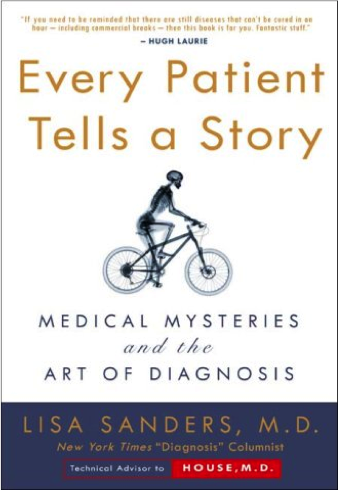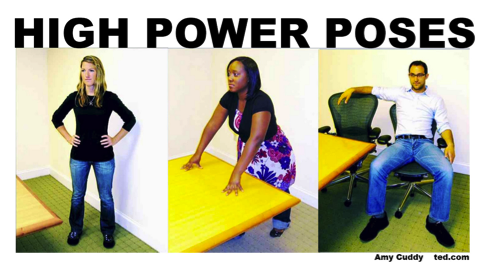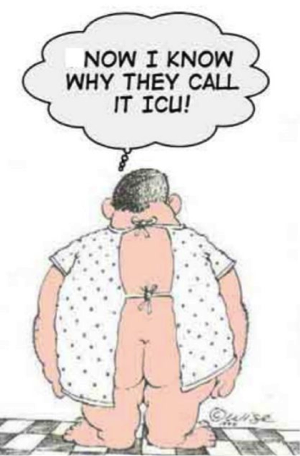Guest posting by Sharon Syau
While reading Dr. Lisa Sander’s Every Patient Tells a Story, I was noticed that she talked often about “the patient’s bedside” and about what doctors do “at the bedside.” By using these phrases, she locates the patient, at least within the diegesis of Every Patient, to a particular space—the hospital bed. 
Why do hospitals need beds? Certainly, beds provide an amount of utility. Sick patients may be most comfortable in beds, and they’re more transportable if they’re in beds already outfitted with wheels.
But could hospital beds be there for the simple reason that they’ve always been there and patients have always been in them? I had a friend who was in the hospital a while back. At some point during his stay, a nurse came in and told him she needed to take some blood. My friend, who was sitting in one of the chairs in the room, said that was fine and proffered his arm. The nurse asked him to move to the hospital bed before drawing his blood. (I’m not sure why the move was necessary.)
Posture is Powerful
There may well be very good reasons for hospital beds—I could see safety and/or liability being a potential concern—but I also think it might be worthwhile to think about whether those beds are necessary for every patient. Beds can be disempowering places. When we imagine someone who is “bedridden,” for instance, we tend to imagine someone who relies on other people for most activities. When patients are in an unfamiliar space like the hospital, then, could being in a bed affect how empowered they feel?
 Social psychologist Amy Cuddy makes an interesting argument about posture, perceptions during social encounters, and physiology.1 The crux of her argument is this: the way we position our bodies before an evaluative social encounter—“tak[ing] up space” with high power poses versus “mak[ing] ourselves small” with low power poses—has a significant impact not only on what types of hormones (specifically testosterone and cortisol) our bodies produce, but also on how confident and comfortable we appear to others.
Social psychologist Amy Cuddy makes an interesting argument about posture, perceptions during social encounters, and physiology.1 The crux of her argument is this: the way we position our bodies before an evaluative social encounter—“tak[ing] up space” with high power poses versus “mak[ing] ourselves small” with low power poses—has a significant impact not only on what types of hormones (specifically testosterone and cortisol) our bodies produce, but also on how confident and comfortable we appear to others.
Looking at these power poses again, I can’t see myself doing any of those in a hospital bed. While that may say more about me than hospital beds, beds are still not the usual place of authority or power. Think of successful company executives, kings, or superheroes, and I’m willing to bet none of them were in beds when you first imagined them.
Hospital Gowns : Redesigned :: Hospital Beds : (A Good Old Analogy)
While I haven’t read anything about people rethinking hospital beds, Kaiser Health News (KHN) has reported that some hospitals—like the Cleveland Clinic—have already redesigned hospital gowns in an effort to improve the patient experience.2
 When KHN asked patients to weigh in on the traditional gowns, they pointed out problems. Steven Shepard, for instance, describes them as “a ridiculous garment that serves little purpose other than expose [his] backside.” Paula Flemming, though, touches on a more abstract problem, saying that she “could probably communicate more confidently with medical providers if [she] didn’t start the visit feeling unable to dress [her]self.”
When KHN asked patients to weigh in on the traditional gowns, they pointed out problems. Steven Shepard, for instance, describes them as “a ridiculous garment that serves little purpose other than expose [his] backside.” Paula Flemming, though, touches on a more abstract problem, saying that she “could probably communicate more confidently with medical providers if [she] didn’t start the visit feeling unable to dress [her]self.”
Back in 2010, the Cleveland Clinic redesigned its hospital gowns with more comfortable fabric and “complete derriere coverage,” and was pleased to report that patients felt far “‘more comfortable in the new design, not just physically but emotionally.’”2 Changing the gown, then, also changed the patient experience.
Hospital beds, as potentially low power places, might reinforce the feeling of “disempower[ment]” that the hospital gowns tend to generate, a feeling that negatively affects the patient experience.2 If testing the redesigned hospital gowns caused “patient-satisfaction scores [to] noticeably increas[e] in a few days,”2 could redesigned hospital beds also have a similar effect?
Amy Cuddy’s research tells us that posture can profoundly affect our physiologies and how positively other people perceive us, leading us to several open questions about hospital beds and the patients in them. How, for example, do patients position their bodies when they’re in hospital beds? Do their respective postures affect the way their physicians perceive them? More importantly, does posture affect the way patients perceive themselves?
Rethinking hospital beds and looking into these questions seem to be worthwhile steps moving forward. After all, patients currently spend most of their time wearing hospital gowns, which already being redesigned, and lying in hospital beds.
Notes:
- For Amy Cuddy’s TED Talk on body language and self-perception, click here.
- For more from KHN about “updat[ing] the hated hospital gown,” click here.
Image Sources:
